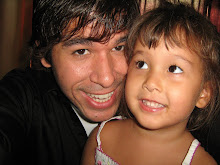Scot McKnight is slowly finding his way to the top of reading lists for many interested in theology, and rightly so [he is quickly gaining ground on my reading list]. "A Community Called Atonement" is both a sweeping overview of the divergent theories of atonement, and a proposal for bringing the divergent views of atonement under a single umbrella of Christ's redeeming work in the world to restore cracked Eikons.
The atonement has too often been squeezed into a one size, one theory fits all box. Often times that box is determined by our denominational influence. McKnight points out that many atonement theories are seriously deficient because they lack any consideration or interaction with Christ's teaching of the Kingdom of God.
"Atonement theories have been shaped by the history of atonement theories, and that history has been dominated by Paul's letter to the Romans so one-sidedly that opening the door to the kingdom upsets the entire conversation." [Page 9]
McKight purports that atonement can only be understood when it is seen through the lens of the work of God to restore cracked Eikons in all interpersonal relations. Atonement must be broadened out from an individual, sin remission only view, to a view that encompasses the work of the entire ecclesiastical community of believers.
Many of our atonement theories capitulate to the very thing that McKnight argues against. We view our problem in the world simply as individual sin. The remedy to this problem is simply an atonement theory that will cover our moral indiscretions, and restore our standing as right moral individuals. Sin however for McKnight goes beyond poor moral decisions. Sin is the "hyperrelational distortion and corruption of hte Eikon's relationship with God and therefore with self, with others, and with the world." [McKnight page 23]
A broad view of the affects of sin will help to broaden out our view of the atonement. If we can move beyond our reformation influenced view of personal sin, we will be able to begin to put our arms around the breadth of the atonement.
McKight offers a view that gathers divergent views of the atonement seeing them as vital parts of the whole. He uses the image of a golf outing. A golfer may have a favorite club, but cannot hope to play a full round of golf with only that club. The same can be said about our views of the atonement. We may have a preferred theory, but our theories in and of themselves cannot fully comprehend the broad scope of the atonement. It takes all the theories together to fully describe the work of Christ on the cross.
McKnight closes his book with an important consideration of the affect of atonement on our praxis as the people of God. Atonement is not simply something that was accomplished 2,000 years ago on the cross, but rather is something that is working its way out through the called out ones. Believers work out the atonement through acts of fellowship, justice, community and prayer. The atonement is not simply an archaic or dusty old theology to be debated and dissected by theologians, but is rather a vibrant and active event that is occurring around us every day.
In short, this book is a brilliant consideration of divergent theories of the atonement, and a great read for both the novice, and advanced student of theology. McKnight has written a classic book on the theory of the atonement.
Monday, March 10, 2008
Subscribe to:
Post Comments (Atom)



1 comment:
What does atonement Mean.
At-one-ment as in Humpty Dumpty in a state of Indiviible Unity sitting on the wall before falling off into scattered fragments on the ground.
And as the story goes "all the kings horses and all the kings men can never ever put Humpty back together again".
In other no amount of "theolgy" or talk, or books, or hype, and even (seemingly) good intentions can put the fragments back together again.
If you begin with a fragment (and fragmentary point of view) ALL of your theology and everything that you do will be limited by that fragmentation----fragmentation in every direction, or all the way down.
Post a Comment